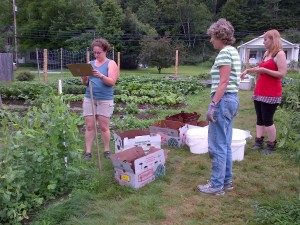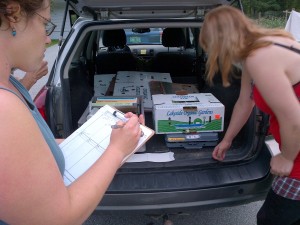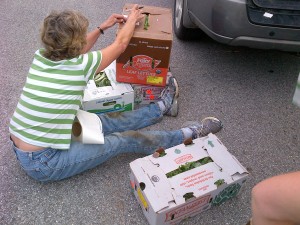Now, this is partnership.
Today Community Harvest of Central Vermont gleaned 40 pounds of food in less than two hours. They left The Garden at 485 Elm in better condition than they found it. In fact, the garden hardly looks touched except where a few entirely flowering plants were pulled up, stripped of edible parts, and composted.
All the food gleaned here today will go to feed people who lack access to fresh produce. Some is headed to the Montpelier Food Pantry and a bunch to Capstone Community Action (CVCAC).

Allison Levin, Community Harvest’s founder and program coordinator, checks the carefully compiled list from our garden coordinator, Cindy, of what to glean. The gleaners always start with food that is on its last days before becoming compost. Volunteers Cathy and Kasie are ready to pick.

Allison, Kasie, and Cathy are thinning leaf lettuce that’s about to bolt. Some of it is already too bitter to use. Tasting is part of gleaning.

When picking kale and chard, the gleaners leave at least eight large outer leaves plus all the small inner leaves untouched. The more you pick kale, the more productive it is.

Allison picks bok choy that had almost entirely gone to flower. It yielded one small box of food and a whole lot of compost. Replanting bok choy has been on our garden to-do list.











